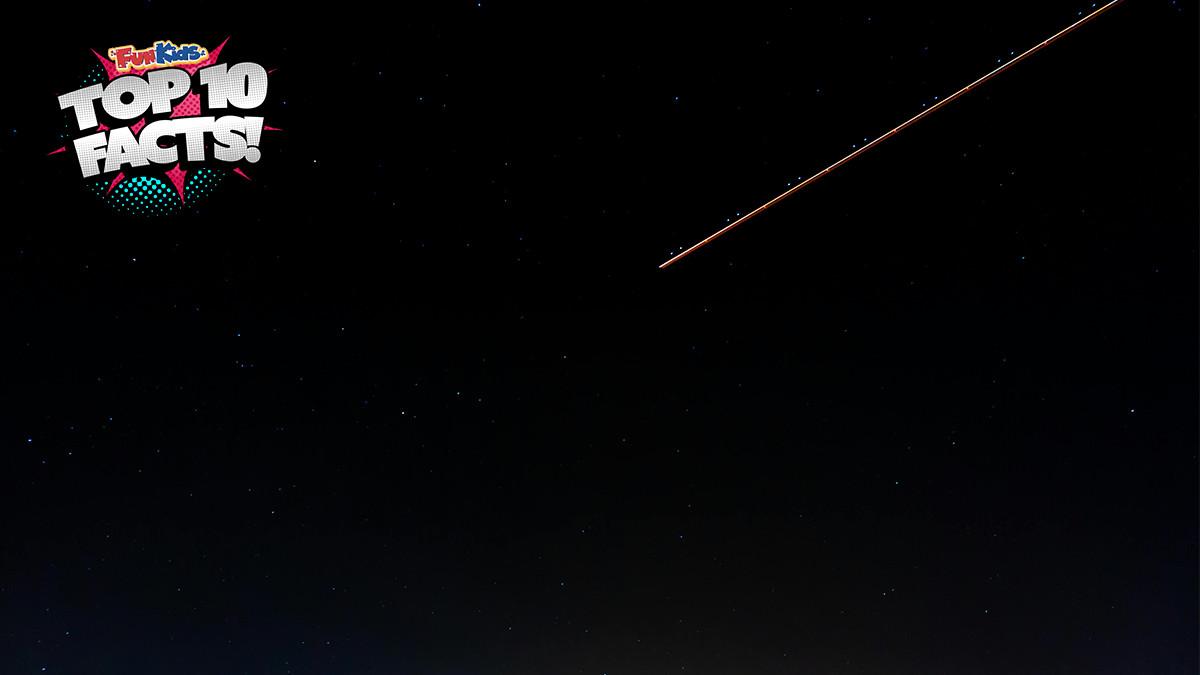Have you ever seen a “shooting star” in the night sky? Those bright streaks of light are actually meteors, pieces of space rock that burn up as they zoom through Earth’s atmosphere! Meteors can be small as a grain of sand or as big as a car, and sometimes, they even make it to the ground. Want to know more about these awesome space travellers? Get ready to discover 10 fun facts about meteors that will make you look at the night sky in a whole new way!
1. Meteors are space rocks!
Meteors are pieces of rock or metal that come from space and burn up when they enter Earth’s atmosphere.
When you see a “shooting star,” you’re actually seeing a meteor streaking across the sky!
2. Meteors burn because of friction
When a meteor enters Earth’s atmosphere, it moves super fast — faster than an airplane!
The air creates friction, which causes the meteor to heat up and burn, making it glow brightly as it zooms through the sky.
3. Some meteors are tiny.
Most meteors are actually very small, some no bigger than a grain of sand!
These tiny meteors usually burn up completely before they reach the ground.
4. If a meteor hits the ground, it’s called a meteorite.
If a meteor makes it through the atmosphere and lands on Earth, it’s called a meteorite.
Most meteorites are small, but they can still tell scientists a lot about space.
Embed from Getty Images5. Meteor showers happen every year.
Meteor showers are when lots of meteors enter Earth’s atmosphere at the same time, making it look like the sky is full of shooting stars!
Famous meteor showers like the Perseids and the Geminids happen every year.
Embed from Getty Images6. A meteorite helped end the Age of Dinosaurs.
Around 66 million years ago, a huge meteorite hit Earth, causing major changes in the environment.
Scientists believe this impact played a big role in the extinction of the dinosaurs!
Embed from Getty Images
7. Meteors can come from asteroids or comets.
Meteors can be pieces of asteroids (which are rocky objects that orbit the Sun) or comets (which are icy bodies with long tails).
As comets pass near the Sun, they can leave behind trails of dust and rock, which turn into meteors.
Embed from Getty Images8. Meteor craters can be huge!
When a large meteorite hits Earth, it can create a giant crater.
One of the most famous craters is the Barringer Crater in Arizona, which is about 1,200 metres wide and 170 metres deep!
Embed from Getty Images9. The largest meteorite ever found weighs 66 tonnes.
The biggest meteorite ever found on Earth is called the Hoba meteorite, discovered in Namibia.
It weighs a whopping 66 tonnes, or about as much as 10 elephants!
Embed from Getty Images10. Meteors are older than Earth.
The rocks that make up meteors are billions of years old – older than Earth itself!
Studying meteorites can help scientists learn more about how our solar system was formed.
Embed from Getty ImagesThese cool facts show that meteors are not just shooting stars—they’re fascinating space rocks with an amazing story to tell!
Add a commentTop 10 Facts
From the Tudors to rocks to fish, we have all the best facts right here!
More From Top 10 Facts



